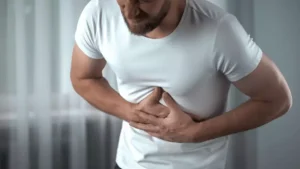
Consistently drinking over a period of time leads you to develop a tolerance for the substance. If you suddenly stop drinking alcohol, it can lead to a number of uncomfortable alcohol withdrawal symptoms. It often drives people with alcoholism to keep drinking in order to limit these symptoms. With so many effects on the body, the usual first step in treating alcoholism is detox—or getting alcohol out of your system. Depending on the severity of the alcohol use disorder, this stage can be mildly annoying or severe. Early withdrawal symptoms include headaches, anxiety, nausea, irritability and shaking.
Middle-Stage Alcoholism
- Outside work, Trent values family time, personal growth, travel, and promoting a healthy lifestyle.
- As a result, you’ll enjoy better sleep, improved mood and energy, and fewer wellness issues.
- While bruises are common, it’s important to know your treatment options and whether your condition warrants emergency medical attention.
- Alcoholic fatty liver disease is common in heavy drinkers.
It’s a disease—an altering of the brain that controls a person’s motivation and ability to make healthy choices. Once it takes hold, it can be hard to shake loose—without the right help. So when you drink alcohol and injure yourself, you can be left with a bigger, more noticeable bruise than you might see while sober.
- Cirrhosis damage is irreversible, but a person can prevent further damage by continuing to avoid alcohol.
- For resources related to AUD, including how to get support, please visit the NIH website.
- If you’re concerned about bruising, talk to your doctor about other possible causes.
- Even though alcoholic neuropathy may not go away, there are things you can do to cope with this condition.
Is Follow-Up Needed After Alcoholism Treatment?
Research has implicated a gene (D2 dopamine receptor gene) that, when inherited in a specific form, might increase a person’s chance of developing alcoholism. Some bruises appear with very little pain, and you might not notice them. While bruises are common, it’s important to know your treatment options and whether your condition warrants emergency medical attention. Understanding your symptoms and signs and educating yourself about health conditions are also a part of living your healthiest life. The links above will provide you with more detailed information on these medical conditions to help you inform yourself about the causes and available treatments for these conditions. While end-stage alcoholism is a dire situation, it’s not a hopeless one.
The Physical Signs of Alcoholism Explained

You can improve the health of your liver by abstaining from alcohol or only drinking in moderation, eating a healthy diet, and managing your weight. If you notice early signs of alcohol-related liver disease, be sure to follow up with your doctor. The early stages of alcohol-related liver disease often have no symptoms. Because of this, you may not even know that you’ve experienced liver damage due to alcohol.
Charitable Care & Financial Assistance
For those who develop an addiction, the effects of alcohol on the body and mind can be significant. How alcohol addiction physically affects different parts of your body. Alcohol-related liver disease actually encompasses three different liver conditions. Bruises that take a long time to heal or getting bruised for no apparent cause could be signs of a bleeding disorder. However, eligibility may depend on being abstinent from alcohol for a specific length of time. After stopping drinking, which is the first step in any treatment of ALD, an assessment will be made as to the extent of the damage and the overall state of the body.


Some chronic alcoholics develop a condition called Wernicke-Korsakoff syndrome, which results from a thiamine (vitamin B-1) deficiency. The condition, which is sometimes called wet brain, is characterized by eye movement disorders, loss of muscle coordination, confusion and memory issues. It affects more men than women and is fatal 10 to 20 percent of the time.

How Do Health Care Professionals Diagnose Alcoholism?
Most people will not experience symptoms in the early stages of ALD. Some may experience mild pain in alcoholic bruising the upper right side of the abdomen. In decompensated cirrhosis, symptoms become more apparent.
What causes bruises?
- Cirrhosis is when normal liver tissue is replaced by scar tissue, which causes the liver to lose its ability to function well.
- Because of this, you may not even know that you’ve experienced liver damage due to alcohol.
- Early withdrawal symptoms include headaches, anxiety, nausea, irritability and shaking.
- Theories suggest that for certain people drinking has a different and stronger impact that can lead to alcohol use disorder.

